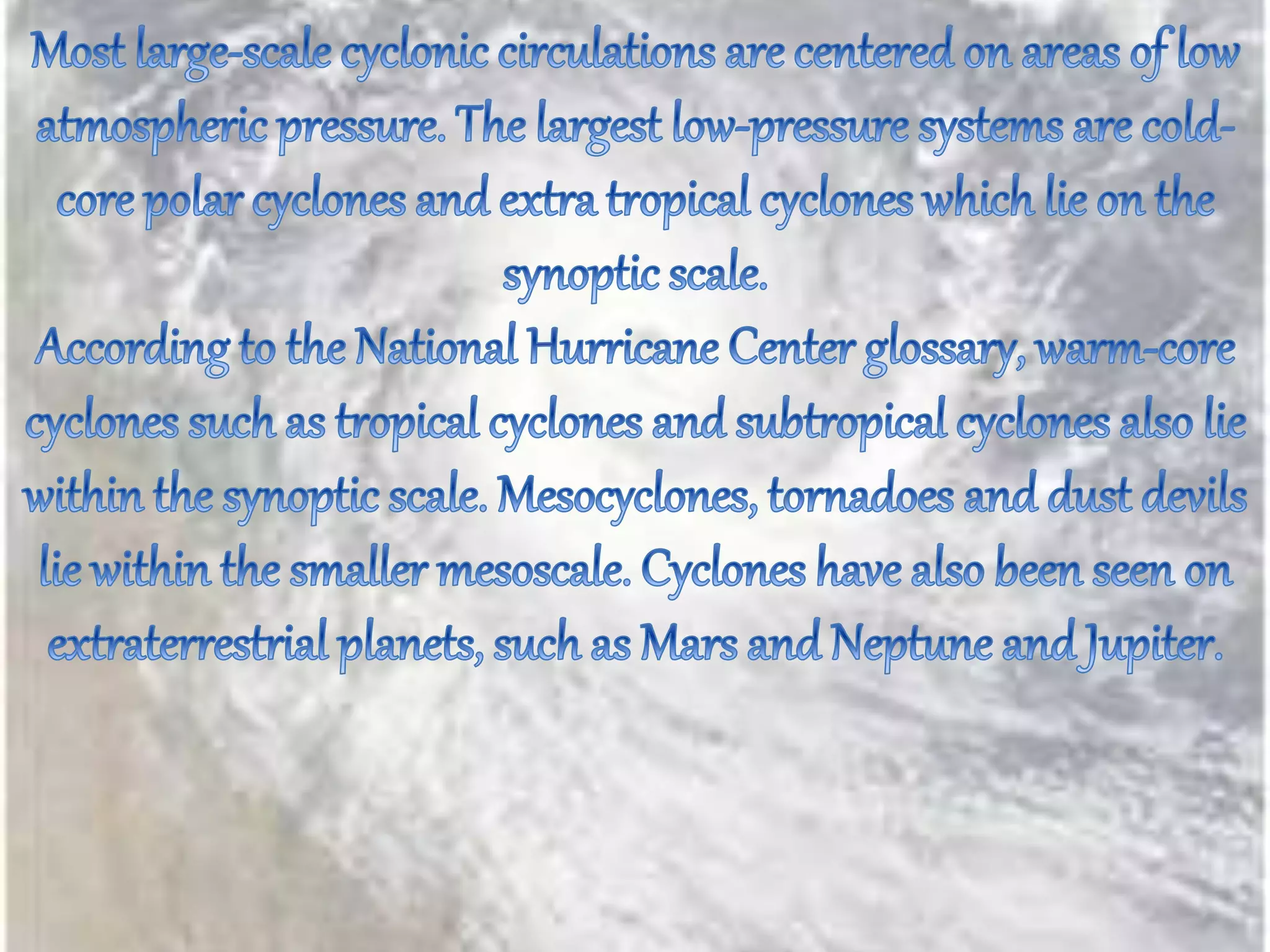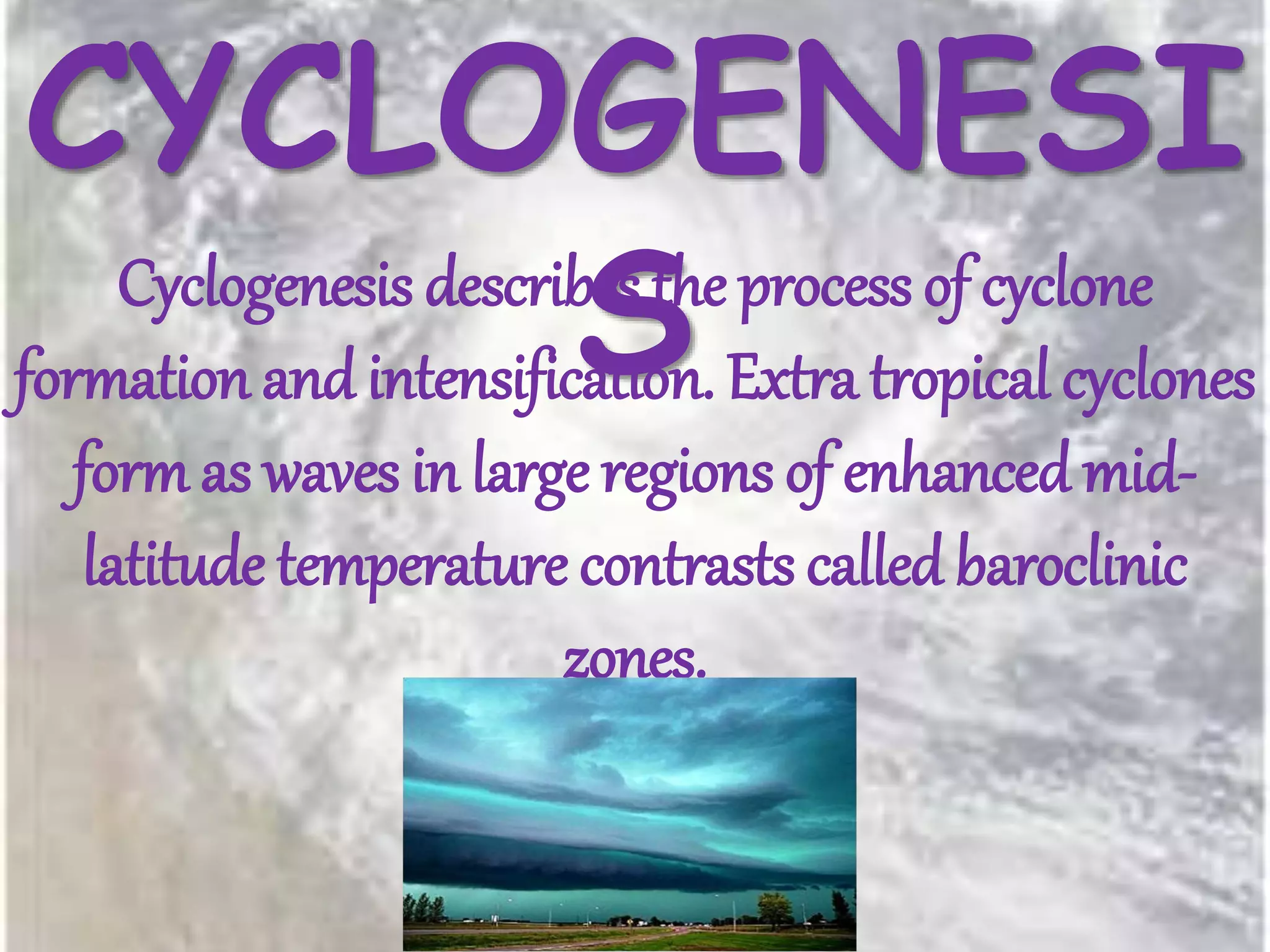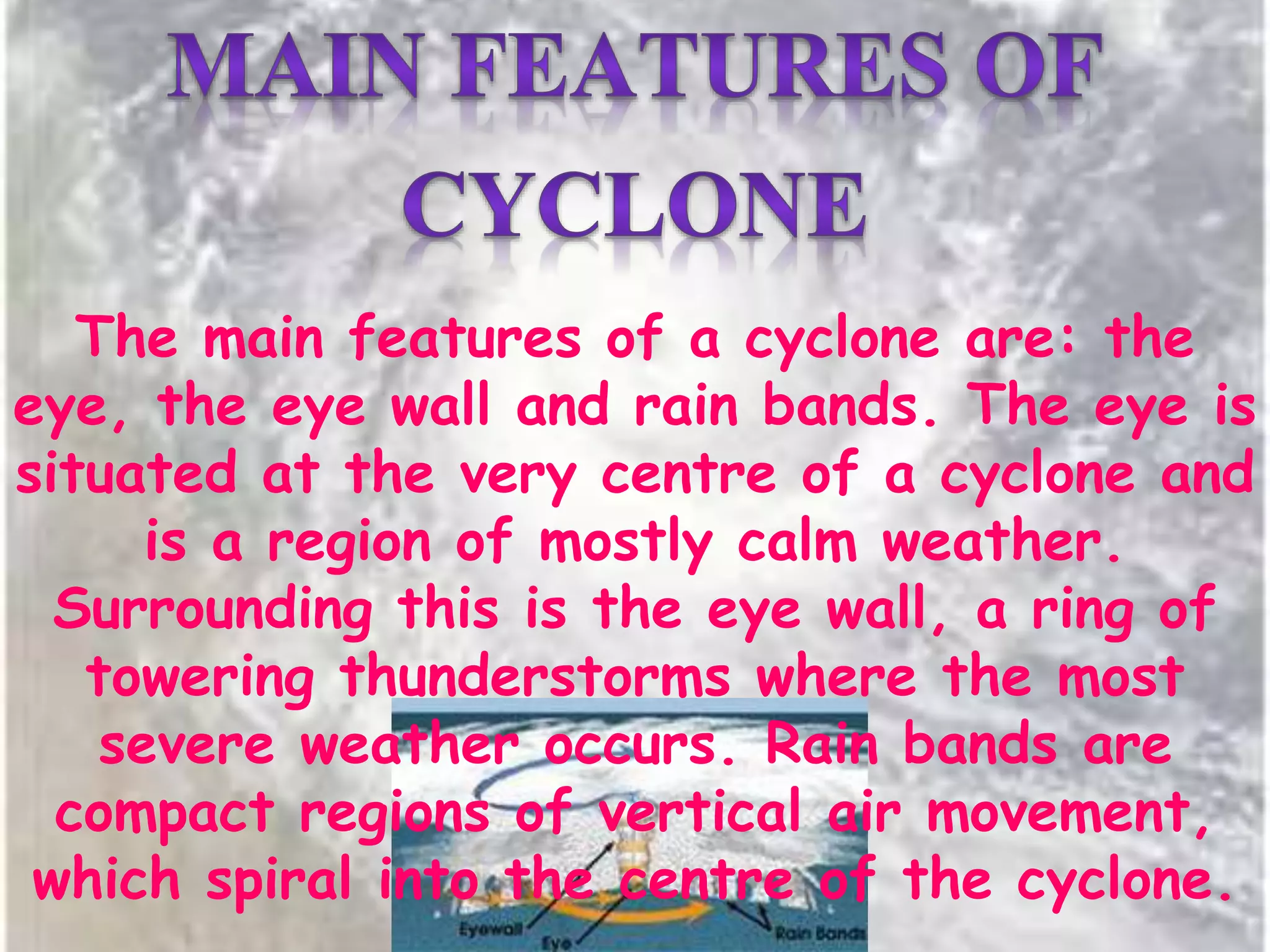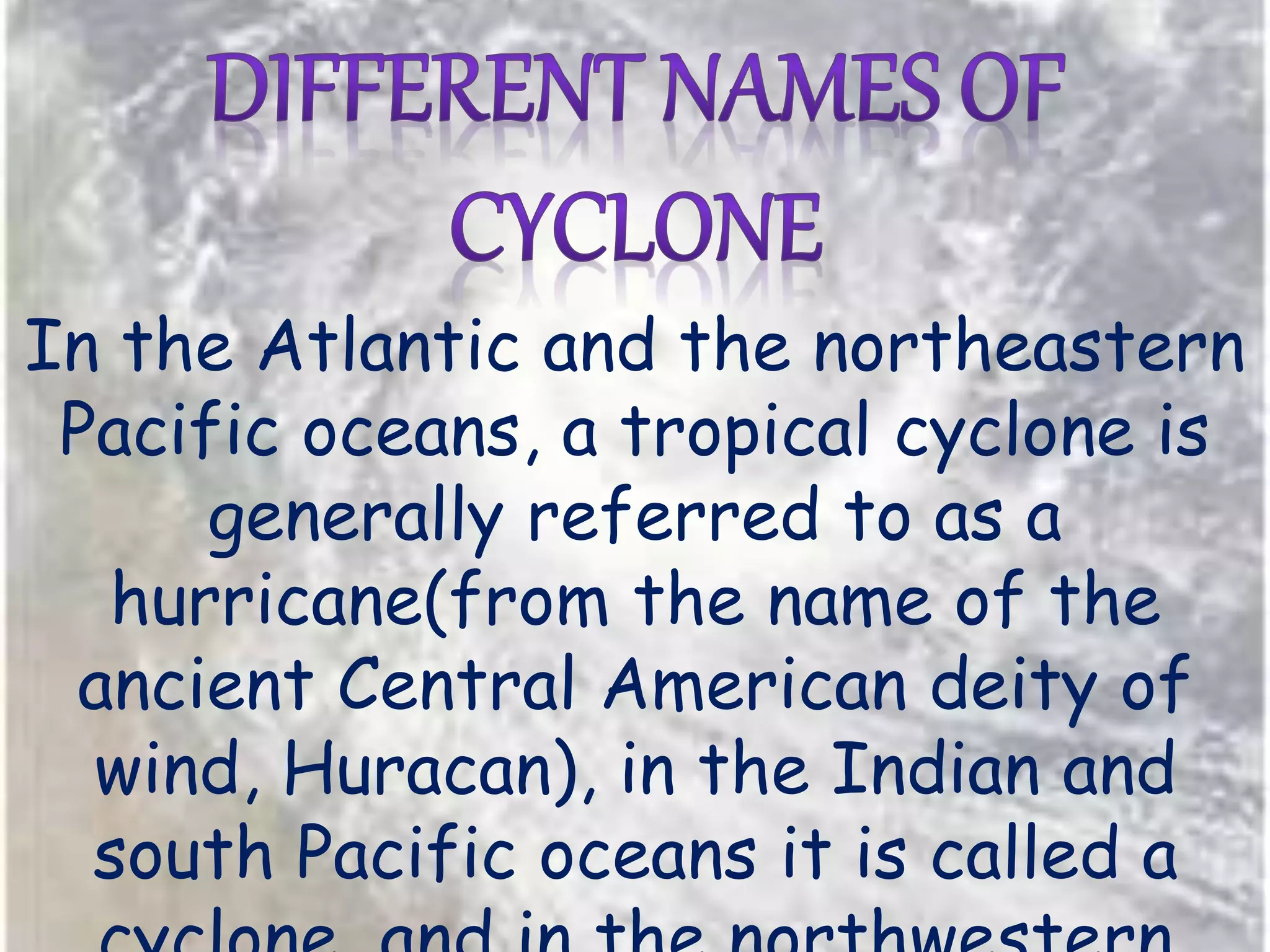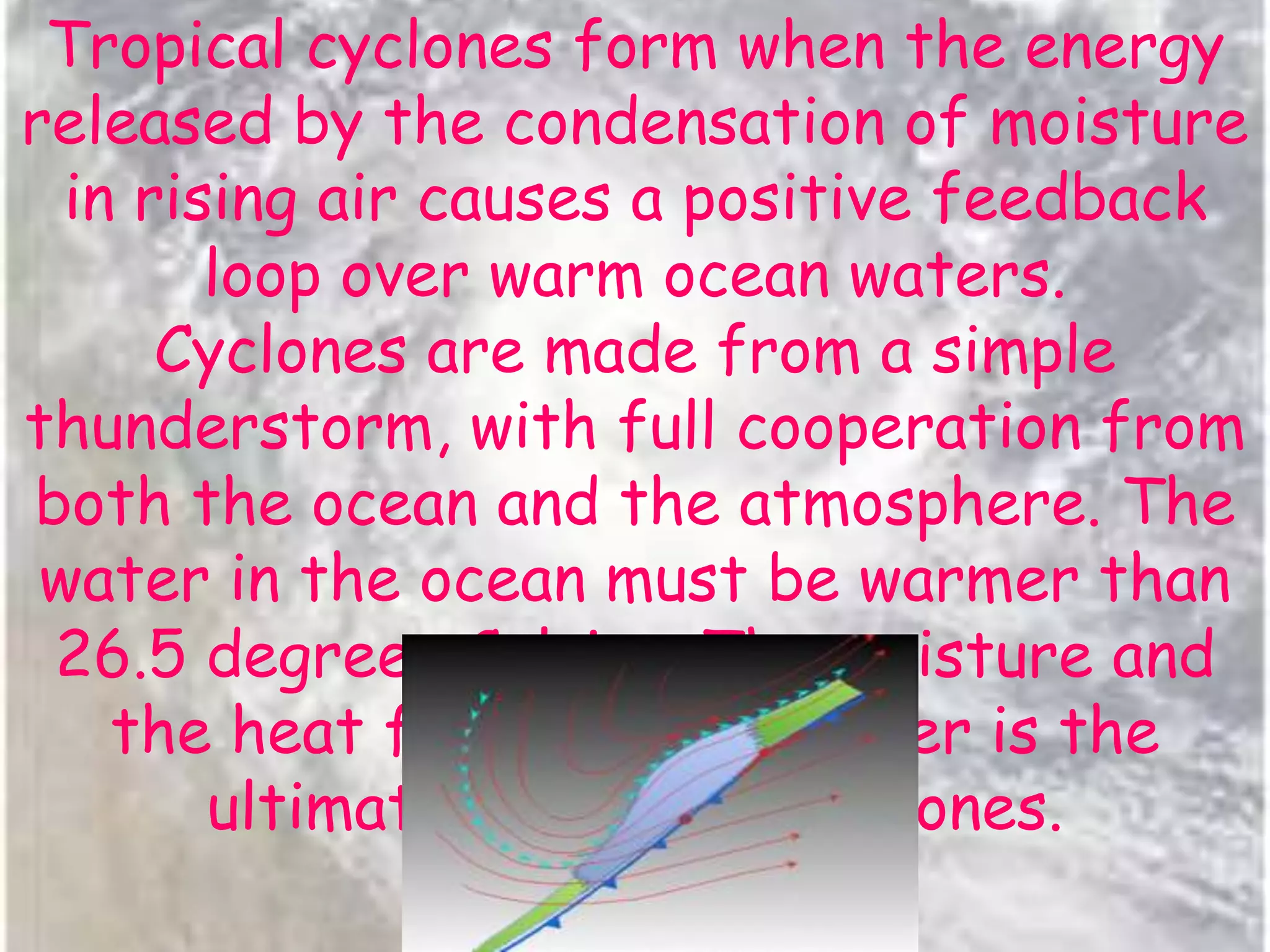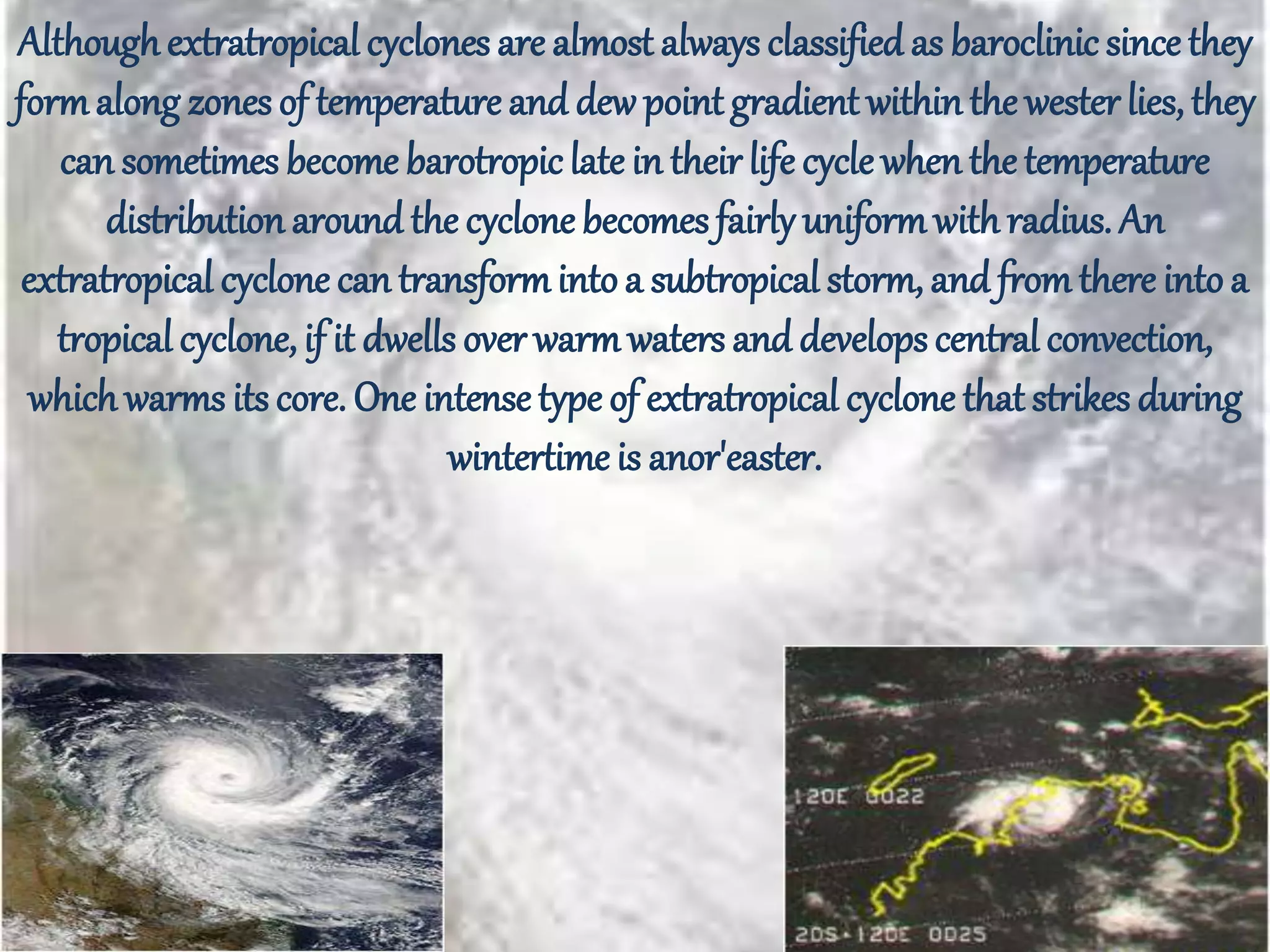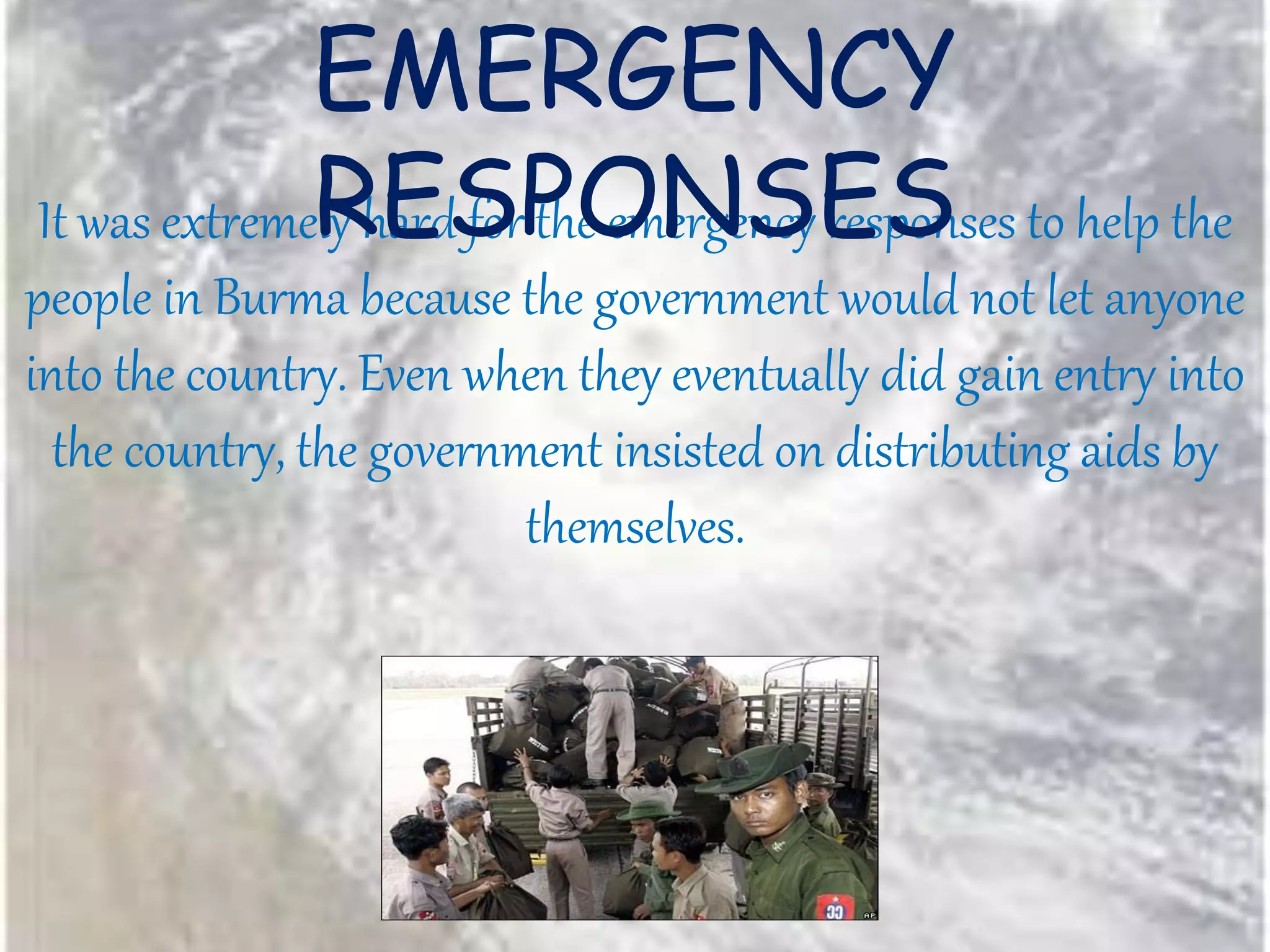The document discusses the formation and characteristics of cyclones, including extratropical, subtropical, and tropical types, as well as the processes of cyclogenesis and the associated meteorological phenomena. It highlights key features of cyclones such as the eye, eye wall, and rain bands, and explains their life cycles, impacts, and transitions among different cyclone types. Additionally, it touches on the effects of tropical cyclones on populations and the environment, citing Cyclone Nargis as a significant historical example of cyclonic devastation.




